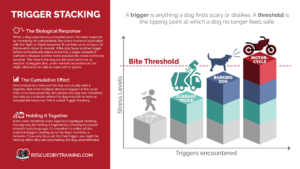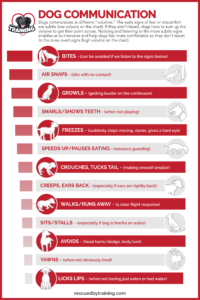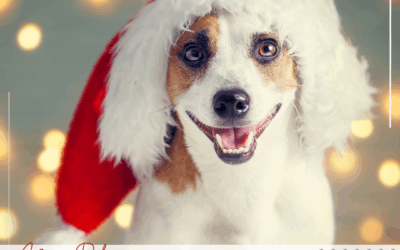Did you ever just have a really bad day, where everything seemed to go wrong? Your alarm didn’t go off, you were rushing around to get ready for work, you spilled your coffee, your toast got burned, you forgot to grab your lunch, your shoe lace broke, you couldn’t find your keys, you hit every red light on the way to work and you showed up 30 minutes late. And when you finally arrived, your co-worker says “Looks like someone’s got a case of the Mondays!” and you just snap and say something snarky in response? Congratulations, you just experienced trigger stacking.
While any dog can experience trigger stacking, when working with fearful dogs, it’s particularly important to be keenly aware of. When a dog experiences a stressful event, his body responds by increasing his cortisol level, the stress hormone associated with the ‘fight-or-flight’ response and it can take up to 72 hours for this level to return to normal. This study showed shelter dogs’ stress hormone levels remain elevated even after 12 days. If the dog faces another trigger before cortisol levels return to normal, a larger amount of cortisol is released and the more elevated his stress hormones become. This means the dog can be more sensitive, or reactive, to triggers that, under normal circumstances, he might otherwise be able to cope with or ignore and stay “under threshold.” (Think of the threshold as the tipping point at which the dog no longer feels safe – like the threshold of a doorway – safe on one side and not safe on the other.)
Under normal circumstances, one stressor at a time, the dog can usually hold it together. But, when multiple stressors happen at the same time, or in close proximity, this pushes the dog “over threshold” and sets up a scenario where the dog may bite or have an unexpected response. This is called Trigger Stacking. (In the human example above, you might have been able to handle the alarm not going off or spilling your coffee on their own but when stacked with other stressful events close together, it causes a bigger, more reactive response like getting snarky with your co-worker.).
Even under threshold when experiencing trigger stacking, the dog may be holding it together but showing increased stressful body language. It’s important to notice all the potential triggers leading up to the dog’s reactivity or behavior. If you only focus on the final trigger, you might be missing others that are also making the dog uncomfortable.
Often when I get calls from potential clients claiming the dog “bit out of nowhere” these are cases of trigger stacking. The dog bit as a reaction to something that he previously “was fine with” but it was a culmination of lots of triggers presented all at once.
 Or, I will get calls from potential clients saying (for example) “my dog is afraid of skateboards” because the dog reacted to a skateboard, but in reality, the skateboard was just the last trigger in a trigger stacking scenario and leading up to the skateboard there was a large crowd of kids running towards the dog, a garbage truck, another dog barking, and a motorcycle had gone by. So while the dog may very well have concerns about skateboards, that isn’t the only issue that needs to be addressed and it’s important to notice all of the things your dog is experiencing on walks and in their environment that could potentially be contributing to their behavior, fear or reactivity. Download this helpful infographic on trigger stacking here.
Or, I will get calls from potential clients saying (for example) “my dog is afraid of skateboards” because the dog reacted to a skateboard, but in reality, the skateboard was just the last trigger in a trigger stacking scenario and leading up to the skateboard there was a large crowd of kids running towards the dog, a garbage truck, another dog barking, and a motorcycle had gone by. So while the dog may very well have concerns about skateboards, that isn’t the only issue that needs to be addressed and it’s important to notice all of the things your dog is experiencing on walks and in their environment that could potentially be contributing to their behavior, fear or reactivity. Download this helpful infographic on trigger stacking here.
Additionally other events can be triggers. If your dog had a vet or grooming visit earlier in the day, he might still be a little stressed from that. If there was a thunderstorm or construction noises, and your dog is noise phobic, that’s a trigger. If your dog got into a squabble at the dog park, that’s trigger. It’s important to know your dog’s sensitivities and keep all of those things in mind. Just because something happened a few hours ago, or even yesterday, doesn’t mean his cortisol level isn’t still elevated. It can be a careful balancing act to help keep the dog under threshold and be able to keep triggers manageable without one tipping everything over, like a really tricky Jenga game!

Learning dog body language is key. Knowing how to identify stress and uncomfortable body language is critically important. Just because your dog might be holding it together doesn’t mean he’s happy. There’s a huge difference between tolerating something and actively enjoying it. Download my dog communication handout here if you need help with dog body language and stress signs.
Book your session here, if you need help with your dog!
Happy training!
![]()




